Revenue Operations
Revenue operations (RevOps) bring sales, marketing, and customer service together to drive revenue growth for a business. It ensures all these teams work towards the same goals and gives managerial stakeholders a complete view of revenue streams.
You can have your Raia AI agent work autonomously to help you tackle problems such as:
- Churn prediction and customer retention
- Performance analysis
- Data analysis and reporting
- Sales forecasting and pipeline management
and more.
Below are a few sample cases you can use as reference
Data Analysis and Reporting
Key Account Monitoring
One of the use cases we can build as an example inside Data Analysis and Reporting is to have our agent monitor our top 3 accounts and opportunities constantly. Hence, we are aware of how the deal is moving. Here is an example:

Using the workflow above, our agent will monitor our top 3 opportunities and gather the details of the account, opportunity, and owner for this deal.
We can move this a bit further and have our agent check if there has been any activity on those opportunities and, if not, take the appropriate action:

The workflow above will help our agent learn to:
- Monitor our top 3 opportunities
- Gather details such as Opportunity Owner, deal details, and account details
- Check if there have been no recent activities related to the opportunities
- Connect with the sales team on Slack, give them details of the opportunities, and ask the team to take action and update those
Product Analysis
Have your agent monitor which products your forecast and opportunities rely on, giving the sales, engineering, marketing, and product leadership teams clear visibility into which products are key for scaling revenue.
You can quickly get insights from your agent through Slack:
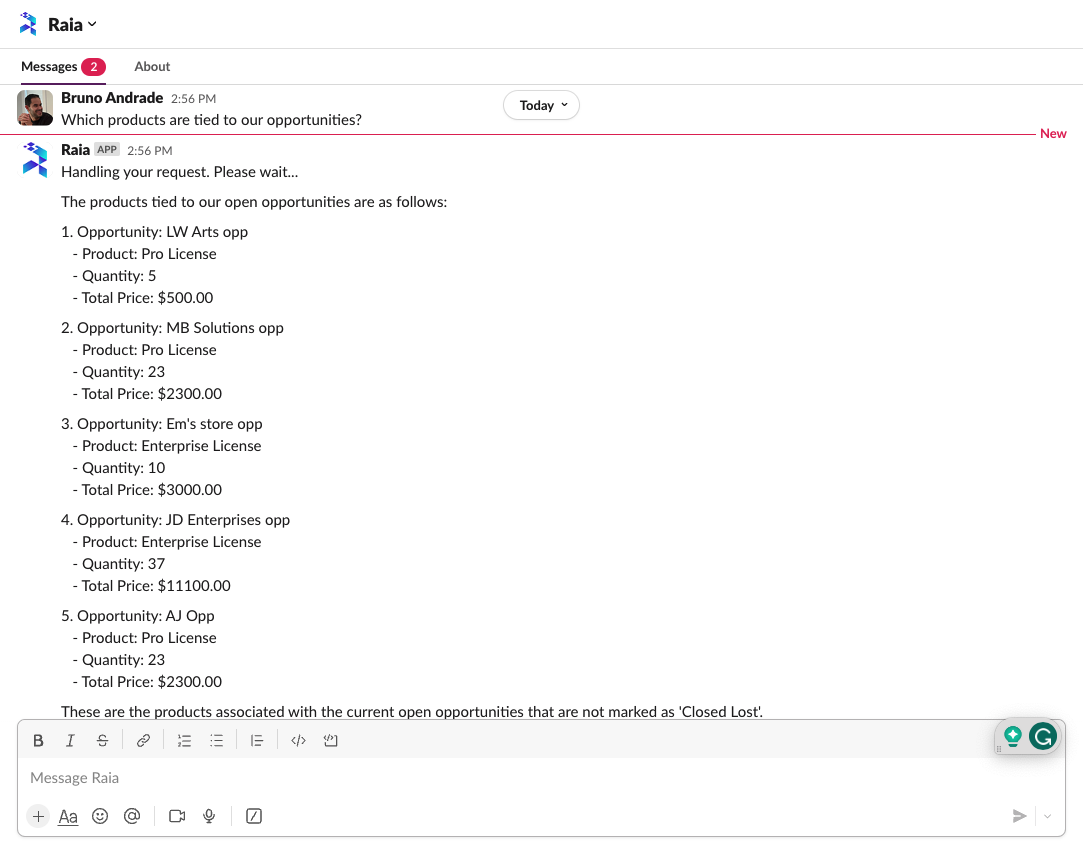
As expected, you can keep digging further and ask your agent to take further action, just like a teammate. 😀

Performance Analysis
Ad-Hoc Analysis
It's a common request that RevOps teams monitor and report the sales team structure, the accounts they own, and the pipeline they drive. In other words, the sales team performance.
Using an agent to do that can help you navigate that analysis and request easily.
You can always chat with your agent and ask for and get your answers right away:
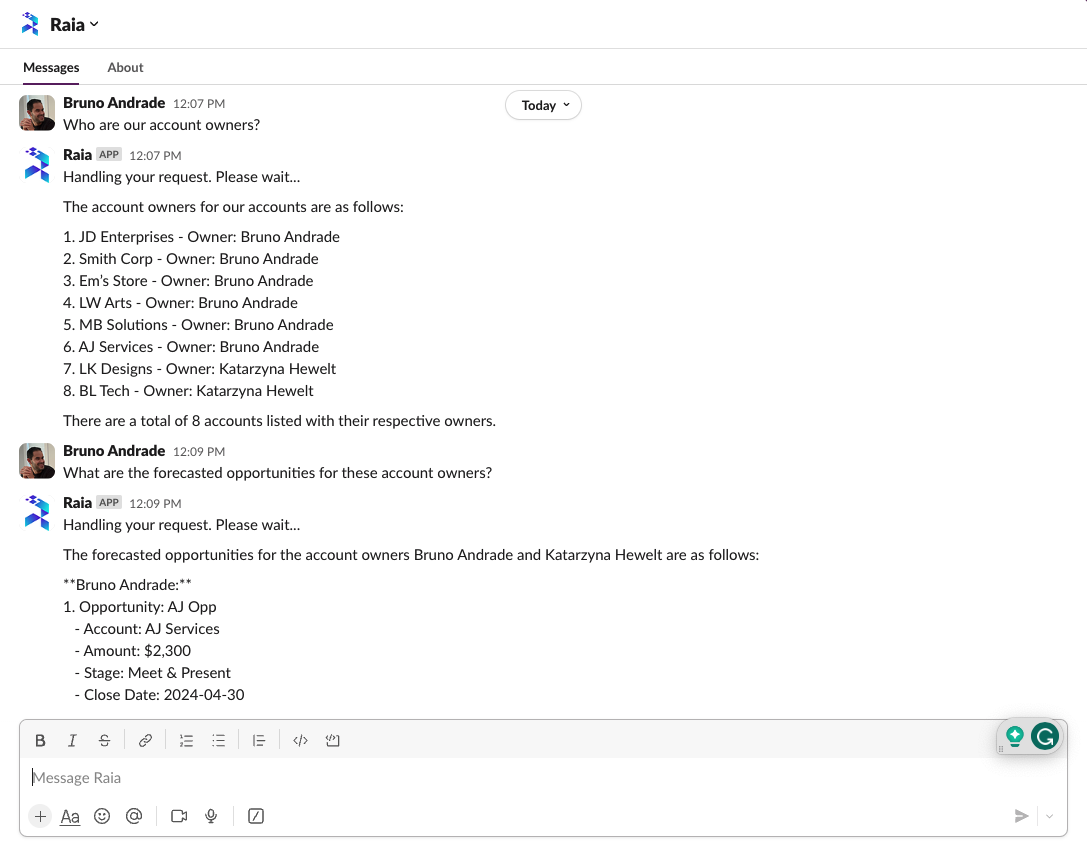
Autonomous Analysis
Since the agent is connected to your underlying system, it can provide all the required details. Still, if you want, you can also train your agent to run autonomously, monitor the performance of your sales team, and alert you based on your requirements. Here is an example:

The initial workflow above will tell your agent to list your account owners and give you a breakdown of the opportunities each of themfor owns.
We can have our agent take this a step further. Let's say you want your agent to let you know when an account owner/salesperson has less than a specific dollar amount forecasted:
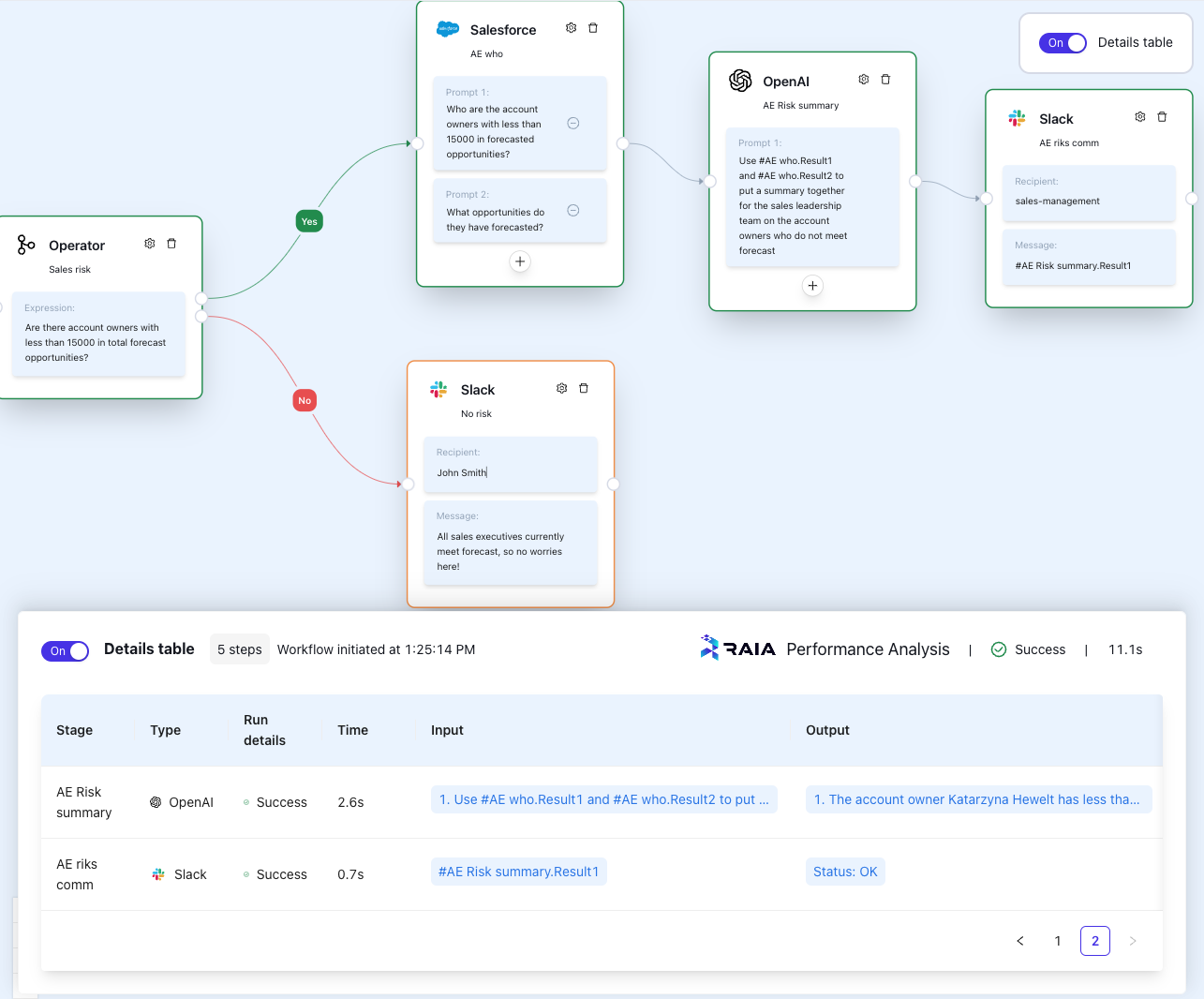
You can have your agent autonomously monitor the sales team performance and communicate with you and the sales leadership when the forecasted dollars are not met, outputting something as below:

You can then continue the conversation with your agent:

Pipeline Management
A sales pipeline is a visual snapshot of where prospects are in the sales process. Sales pipelines show how many deals salespeople are expected to close in a given week, month, or year and how close a rep is to reaching their sales quota.
A study by the Harvard Business Review found that companies that mastered pipeline management practices saw 28% higher revenue growth, so why not use our agent to help us manage our pipeline?
Here is an example:
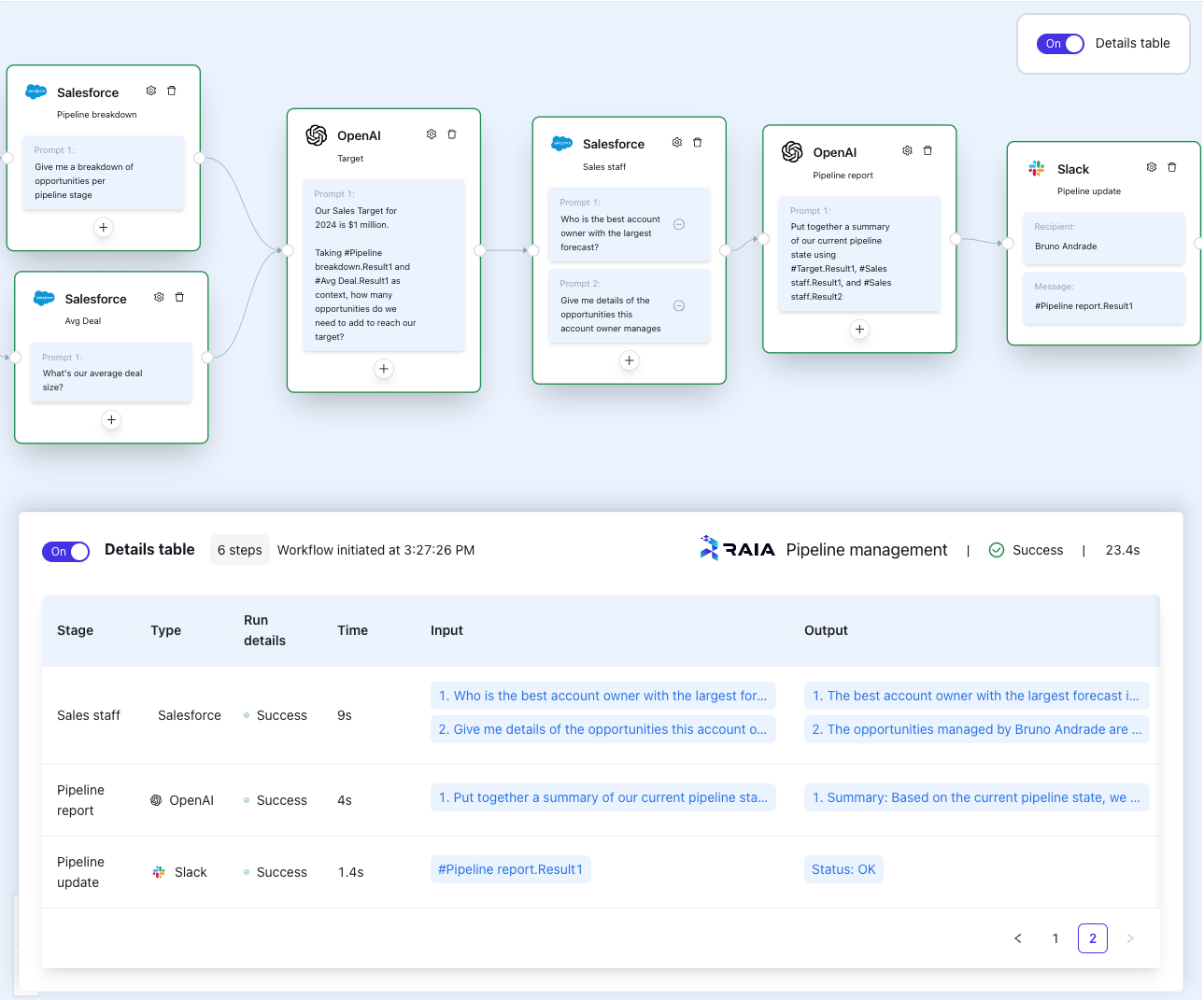
The above will enable your agent to deliver a report similar to the one below:
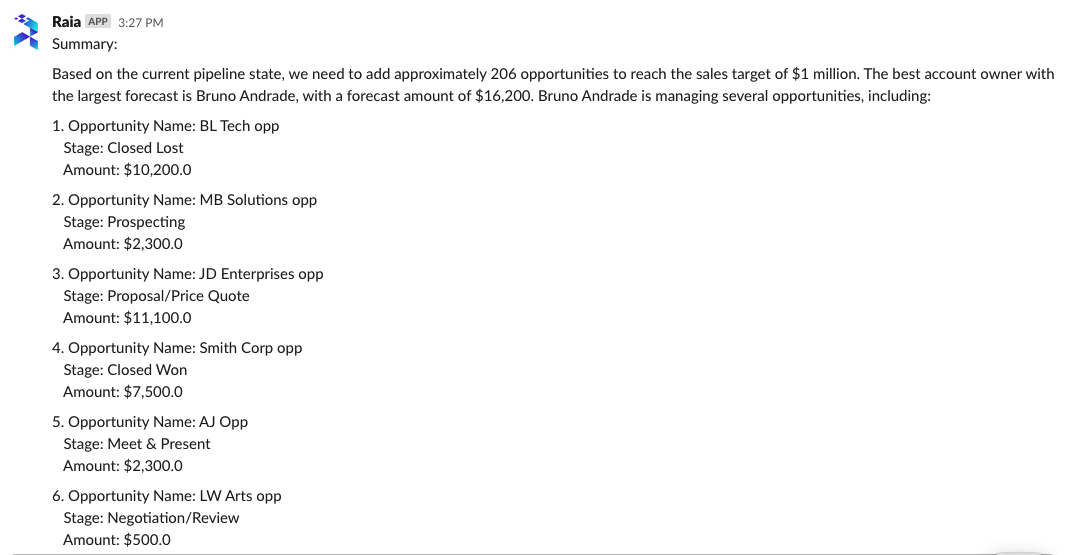
From here, you can chat with your agent to get any additional data you may require or questions you want it to answer.
Updated 11 months ago
